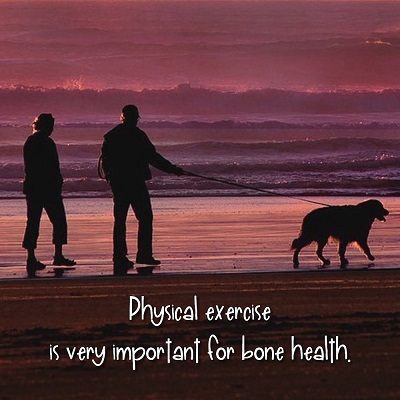Exercise for Health
 Physical exercise is very important for bone health. Any form of physical activity helps to keep the bones healthier, and aids in muscle strength, flexibility, balance, and coordination.
Physical exercise is very important for bone health. Any form of physical activity helps to keep the bones healthier, and aids in muscle strength, flexibility, balance, and coordination.
Bone density or the amount of bone minerals and calcium found in our bones can be measured with a BMD (bone mineral density) test. A BMD test can effectively determine a person’s bone health, risks of breaking bones, and osteoporosis. If the bone mass is low, but not low enough to qualify as ‘osteoporosis,’ it is known as osteopenia.
Whether a person has osteoporosis, osteopenia, or is healthy, physical exercises can further help keep the bones stronger, reduce the risk of breaking bones, and prevent accidents, injuries, or the likelihood of a bad fall. Continue reading
 There are several benefits to working out, we all know that. Regular physical activity can build strength, boost immunity, improve posture, and can also lead to weight loss, which further lowers the risk for chronic illnesses and disease.
There are several benefits to working out, we all know that. Regular physical activity can build strength, boost immunity, improve posture, and can also lead to weight loss, which further lowers the risk for chronic illnesses and disease.
However, regular exercise employing the same repeated workout can lead to what fitness experts call the workout plateau. A workout plateau happens when our body gets used to the rigor of the workout and could signal that you need to up the intensity level of your exercise routine.
Changing up your workout and gradually increasing the intensity is the key to seeing results consistently. A good intense workout is one that uses your whole body and keeps your heart rate at 70% of your maximum recommended rate for your age. For comparison, a moderate workout may only register about 50-60% maximum heart rate. Continue reading






